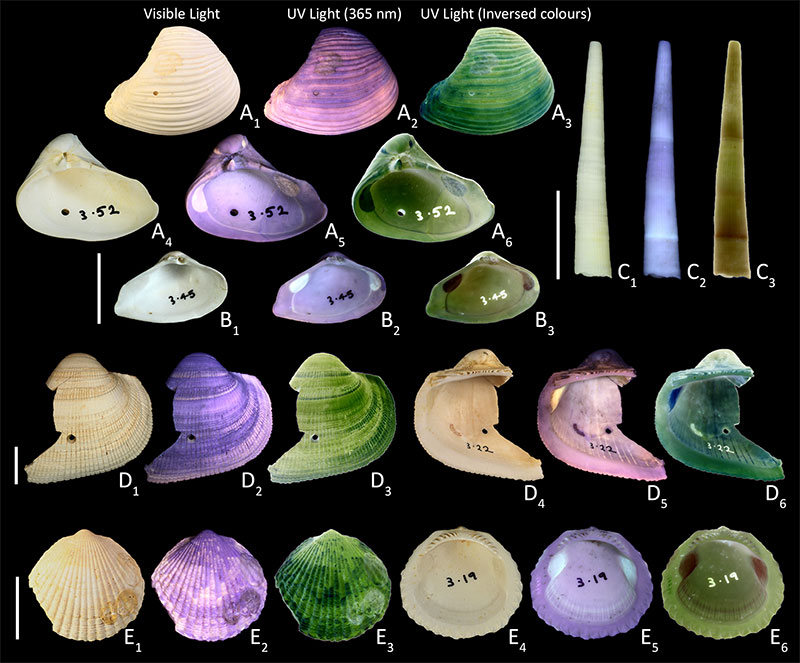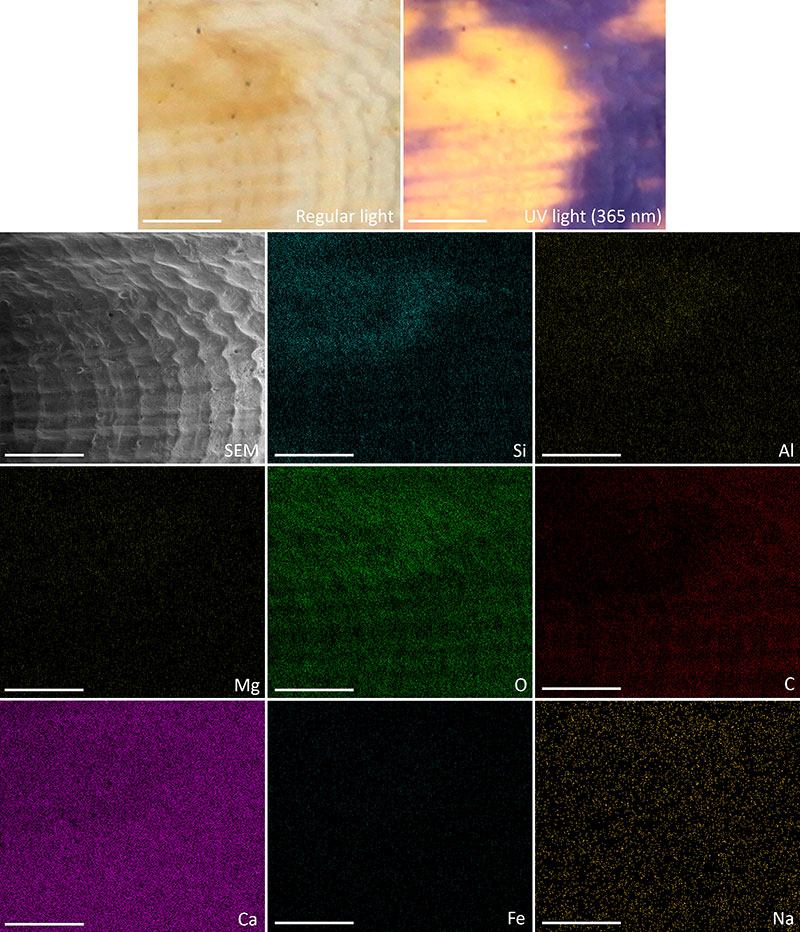FIGURE 1. Map showing the fossil site, the type section of the Murbko Marl. A: Regional map. B: Location within Australia.

FIGURE 2. Simplified stratigraphic chart of the South Australian portion of the Murray Basin showing Miocene units [modified from Gallagher and Gourley (2007) and Cowley and Barnett (2007)].

FIGURE 3. Field photographs of the mid-Miocene Murbko Marl, Murray Basin, South Australia. A: Full exposure of outcrop along the River Murray. Marked section of exposure is the Murbko Marl. Stars show locations of Figure 2B, C and D. Person for scale. B: Exposed wall face showing the typical height of visible in situ material. Notebook for scale. C: In situ fossils in the exposed wall face. Marker for scale. D: Loose ex situ material. Most studied specimens originate from this loose material.

FIGURE 4. Fossil and modern specimens of Maoricolpus. Fossils photographed under visible light, ultraviolet (UV) light (365 nm), and UV light with colours inversed. Modern Maoricolpus roseus (Quoy and Gaimard, 1834) photographed under visible light only. A–F: Maoricolpus murrayanus (Tate, 1885) from the mid-Miocene Murbko Marl, Murray Basin (South Australia): A1–A4: SAMA P60018. B1–B3: SAMA P60036. C1–C3: SAMA P60037. D 1–D3: SAMA P60038. E 1–E3: SAMA P60039. F: M. murrayanus specimen with partial original pigment (SAMA P60040). G–I: Maoricolpus roseus from New Zealand: G1,G2: SAMA D51431. H: SAMA D74438. I: SAMA D74439. Arrowheads point to checkerboard-like pattern. Scale bars equal 10 mm.

FIGURE 5. Gastropods from the mid-Miocene Murbko Marl, Murray Basin (South Australia), photographed under visible light, ultraviolet (UV) light (365 nm), and UV light with colours inversed. A: Gazameda acricula (Tate, 1893) (SAMA P60022). B: Gyrineum maccoyi (Pritchard, 1898) (SAMA P60021). C: Penion roblini simulans (Tate, 1888) (SAMA P60029). D: Dennantia murrayana (Tate, 1888) (SAMA P60030). E: Ternivoluta antiscalaris (McCoy, 1866) (SAMA P60020). F: Alocospira sp. (SAMA P60026) G: Superfamily Conoidea (SAMA P60031). Scale bars equal 10 mm, except A4, G5 = 5 mm.

FIGURE 6. Gastropods from the mid-Miocene Murbko Marl, Murray Basin (South Australia), photographed under visible light, ultraviolet (UV) light (365 nm), and UV light with colours inversed. A: Nannamoria cadella Hawke, 2021 (SAMA P60028). B: Nannamoria sp. (SAMA P60027). C: Eunaticina subinfundibulum (Tate, 1893) (SAMA P60025). D: Serrata propinqua (Tate, 1878) (SAMA P60023). E: Lophiotoma murrayana (Pritchard, 1904) (SAMA P60024). F: Notoluponia murraviana (Tate, 1890) (SAMA P60019). Scale bars equal 10 mm, except A5, B5, E4 = 5 mm.

FIGURE 7. Bivalves (A–B, D–E) and scaphopod (C) from the mid-Miocene Murbko Marl, Murray Basin (South Australia), photographed under visible light, ultraviolet (UV) light (365 nm), and UV light with colours inversed. A, B: Corbula ephamilla Tate, 1885 (SAMA P60016, P60033, P60034) external right valve (A1 –A 3), internal right valve (A 4–A6), internal left valve (B). C: Fissidentalium mawsoni (Zittel, 1865) (SAMA P60017). D: Cucullaea corioensis McCoy, 1876 (SAMA P60014) external valve (D1–D3), internal valve (D4–D6). E: Tucetona subtrigonalis (Tate, 1886), external valve (E1–E3: SAMA P60032), internal valve (E4–E6: SAMA P60015). Scale bars equal 10 mm.

FIGURE 8. Visible light, UV light, SEM image and EDX maps for the fossil turritellid, Maoricolpus murrayanus (SAMA P60041), from the mid-Miocene Murbko Marl, Murray Basin (South Australia). Element initials indicated in lower-right corner. Scale bar equal 1 mm.


